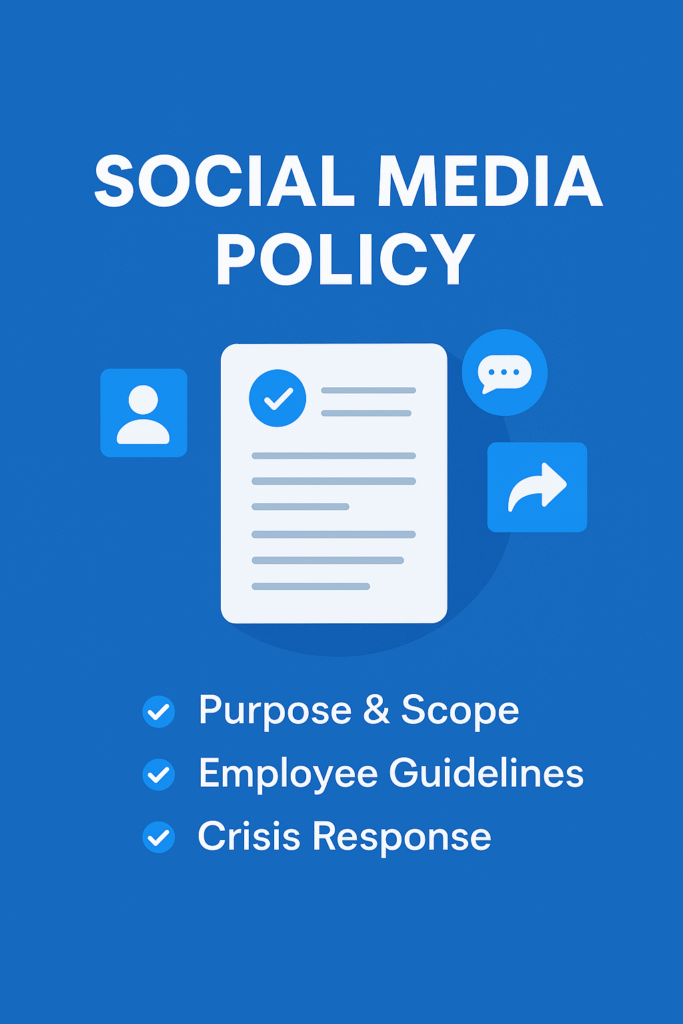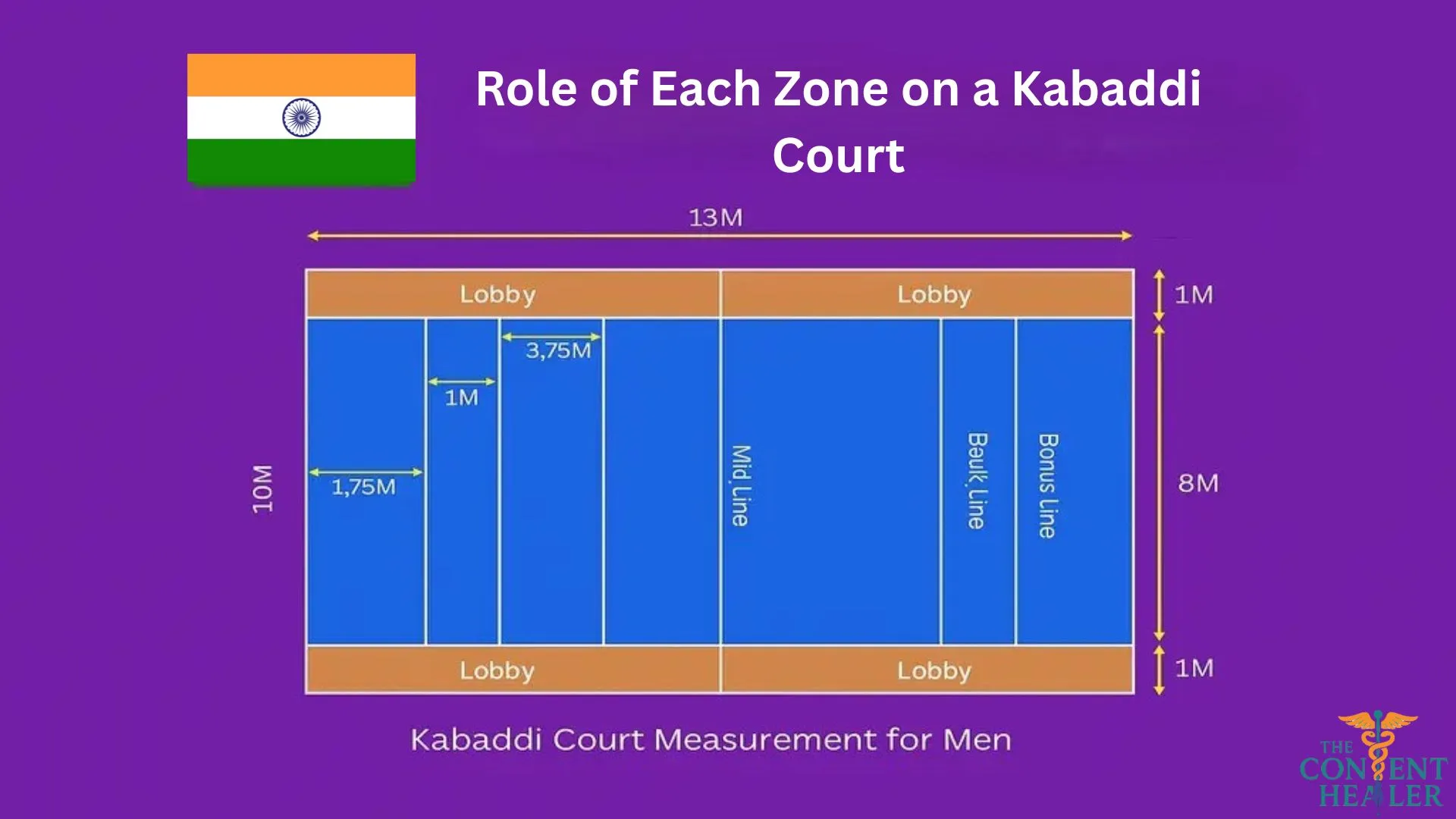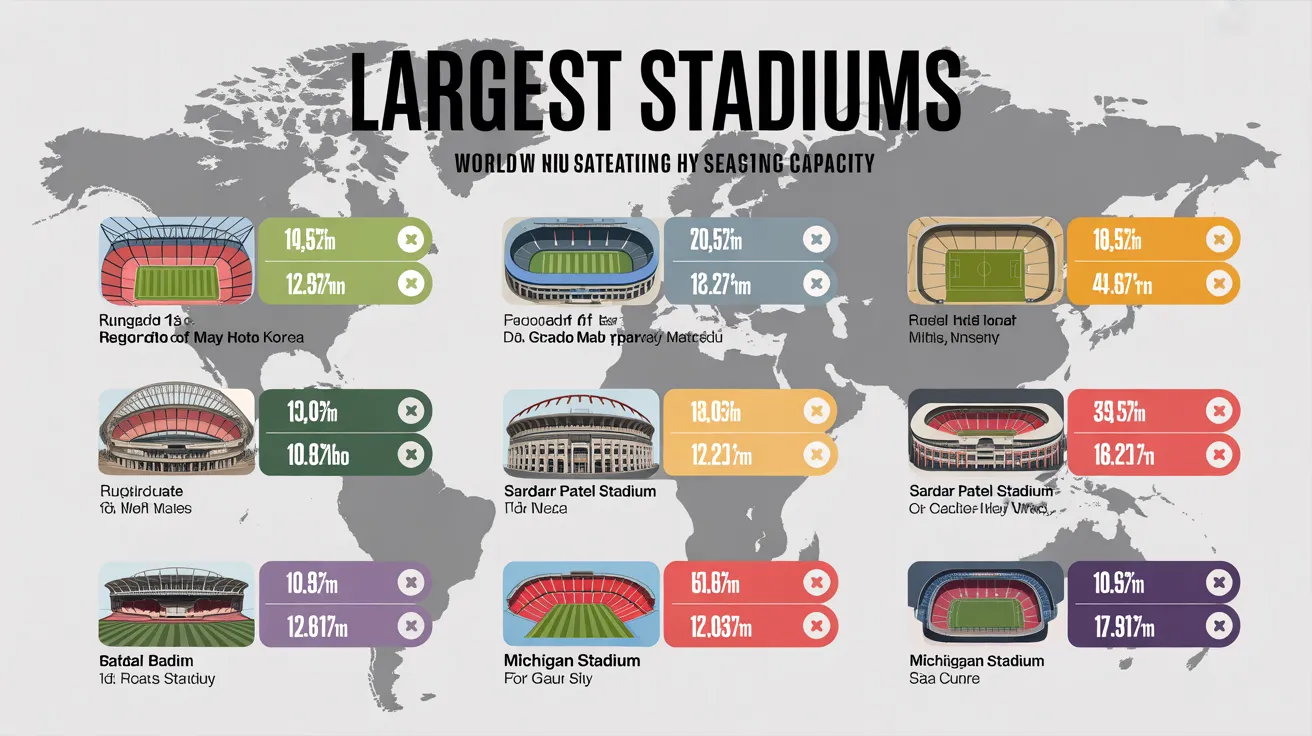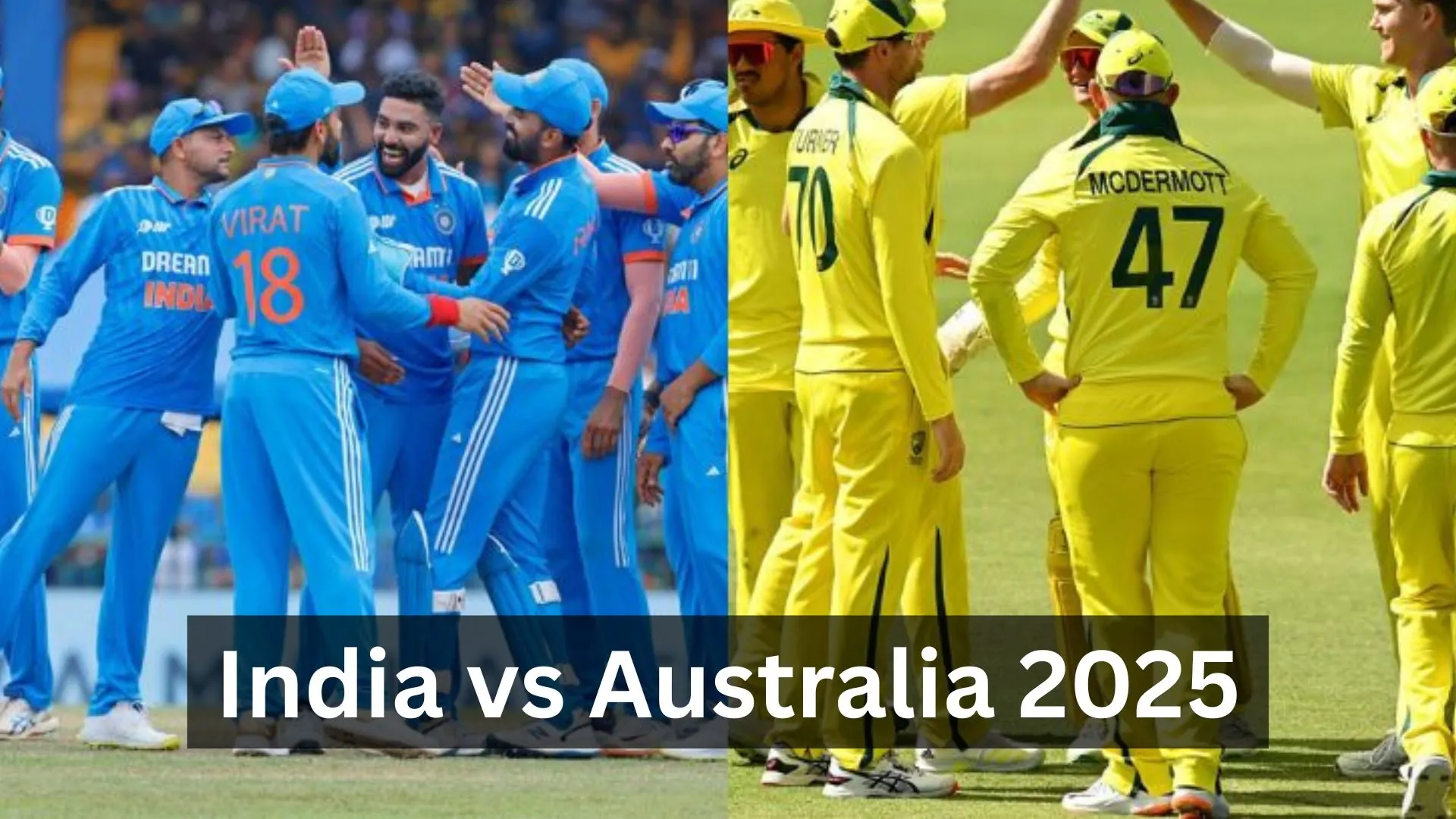Social Media Policy made simple—learn structure, legal compliance (GDPR, India’s DPDP), workflows, and examples to safeguard brand reputation in 2025.

Introduction: Why every business needs a Social Media Policy now
Social media is your loudest public microphone—and your easiest way to leak data, damage trust, or misstate the brand. With 5.41 billion social media users worldwide as of July 2025, the stakes are higher than ever: your employees, customers, and partners are all online, all the time. A clear, modern Social Media Policy helps you tap this reach safely—guiding tone, disclosure, data handling, and crisis playbooks. Click here DataReportal – Global Digital Insights
Latest 2025 snapshot (to set your policy’s scope)
- Scale & growth: The world counts 5.24–5.41B active social media identities in 2025, up ~4% year over year. Your Social Media Policy must assume most staff and customers are active users. Click here DataReportal – Global Digital Insights+1
- Time spent: Younger audiences (16–24) spend ~3× more daily time on social than seniors. Your brand’s risk surface (and opportunity) grows with this attention. Click here DataReportal – Global Digital Insights
- Platform behavior: YouTube commands the largest share of global “time on platform,” which matters for moderation and copyright guidelines in your Social Media Policy. Click here DataReportal – Global Digital Insights
What is a Social Media Policy? (Definition you can use)
A Social Media Policy is a written framework that defines who may publish, what they may say, how they protect data and brand reputation, and when to escalate issues. It covers official brand channels and employees’ personal accounts when those accounts can be linked to your employer or client.
Core outcomes:
- Reduce legal and regulatory risk (privacy, advertising standards).
- Protect confidential information and customer data.
- Keep brand voice consistent across teams and regions.
- Provide fast, coordinated responses to crises.
- Encourage safe employee advocacy and thought leadership.
Compliance you cannot ignore in 2025
Your Social Media Policy should align with jurisdictional obligations where you operate or target customers.
European Union: GDPR (and faster enforcement coming)
- If posts, contests, DMs, or social listening collect personal data, GDPR principles (lawful basis, transparency, minimization, security) apply—especially in lead-gen, UGC campaigns, and social logins.
- In May 2025, EU institutions agreed new GDPR procedural rules to speed up cross-border enforcement—expect quicker investigations in large cases touching social data flows. Update your policy’s breach & inquiry responses accordingly. Click here European Commission+1
- Start with an accessible explainer (helpful for staff training): GDPR compliance guide.Click here GDPR.eu
India: Digital Personal Data Protection (DPDP) Act landscape
- India’s DPDP Act, 2023 has draft DPDP Rules (2025) out for consultation—covering cross-border transfers, consents, and conditions around data of minors (including for social media). Your Social Media Policy should anticipate these obligations—even while final notifications are pending. Click here IAPPprivacyworld.blogInternational Bar Association
- As of August 2025, coverage notes the regime’s full enforcement is still awaited; do not delay readiness—build DPDP-aligned notices, consents, retention, and grievance workflows into policy now. Click here The Economic Times
Outbound resources (for your policy appendix):
• EU data protection framework overview.Click here European Commission
• Official GDPR text (easy navigation).Click here gdpr-info.eu
• India DPDP Rules 2025 explainers (IAPP / law firm analyses).CLICK HERE IAPPDLA Piper Data Protectionprivacyworld.blogInternational Bar Association
The 10 building blocks of a modern Social Media Policy
Use these as your table of contents. Copy the clauses into your handbook and adapt to your sector (tech, health, finance, education, etc.).
- Purpose, scope, definitions
- Define the Social Media Policy coverage: corporate handles, country pages, employee advocacy, influencer posts, vendors and agencies.
- Clarify that local law prevails in case of conflict.
- Roles and approvals
- Name accountable owners: Social lead, Legal/Privacy, InfoSec, HR, and Country Managers.
- Require pre-approval for high-risk posts (claims, price/offer terms, crisis statements).
- Brand voice & content standards
- Tone, inclusive language, accuracy checks, source citation rules.
- Prohibit hate speech, harassment, and political endorsements on brand channels.
- Enforce accessibility (alt text, captions, contrast, no text-in-image without description).
- Confidentiality & insider information
- Forbid posting non-public financials, unreleased product features, customer data, or legal matters.
- Include quiet periods and securities/insider-trading guardrails for listed companies.
- Privacy, consent & data handling
- Consent for UGC reposts; rules for DMs and social listening; secure handling of PII.
- GDPR/DPDP mapping: purpose limitation, retention schedules, data subject rights routing.Click here European CommissionIAPP
- Employee personal accounts
- Employees may identify as working at the company but must add: views are my own.
- Prohibit disclosure of confidential info and disallow using logos/brand assets without permission.
- Provide guidance for respectful debate and avoiding conflicts of interest.
- Influencers & employee advocacy
- Mandatory ad disclosures (#ad, #sponsored) and platform-specific paid partnership tags.
- Contracts must cover approvals, IP, takedowns, FTC/ASA equivalents, and post-termination conduct. (HR references & policy examples can help shape this section.) SHRM+1
- Security & access management
- Strong passwords, SSO, MFA; centralized password vault; revoke access on offboarding.
- Phishing and impersonation reporting; verified account badges where available.
- Crisis response & escalation
- Triage matrix (severity, response owner, SLA).
- Pre-approved holding statements; dark posts/ads freeze rules; legal privilege triggers.
- Monitoring, training & enforcement
- Quarterly training; sign-offs during onboarding and annually.
- Graduated discipline for violations; amnesty window for self-reported errors.
- Annual policy review aligned to regulatory changes (e.g., new GDPR procedural rules; India DPDP notifications). European CommissionThe Economic Times
Step-by-step: Implement your Social Media Policy in 30 days
Week 1 — Assess risk & map laws
- Audit all brand and regional handles; list admins and agencies.
- Identify where you collect personal data (DMs, lead ads, contests) and map to GDPR/DPDP rules. European CommissionIAPP
Week 2 — Draft the Social Media Policy and workflows
- Use a reputable policy template as scaffolding, then localize.
- Build approval flows in your scheduler (e.g., labels for “legal review needed”). SHRM
Week 3 — Train & secure
- Deliver a 60-minute training covering confidentiality, disclosures, and crisis drill.
- Enforce MFA, rotate passwords, and tighten role-based access.
Week 4 — Launch & measure
- Publish the Social Media Policy to your intranet; require e-sign.
- Track incidents, response times, and takedown success rates; schedule a 90-day review.
Sample clauses you can reuse (plug-and-play)
A. Official accounts & approvals
Only authorized team members may post on official channels. Content containing financial claims, medical/health claims, or personal data must be reviewed by Legal/Compliance before publication.
B. Confidential information
Employees must not share non-public information, including customer data, pricing, security practices, or unreleased product features. Violations may result in disciplinary action.
C. Personal accounts & disclosures
When discussing industry topics, employees must avoid implying official company statements. If employment is visible, add a disclaimer such as “opinions are my own.” Do not engage in harassment, discriminatory speech, or disclose confidential information.
D. Privacy & data handling
Personal data obtained via social media (e.g., DMs, lead-gen forms, UGC) must be processed lawfully, transparently, for specified purposes, with appropriate security, and retained no longer than necessary per GDPR/DPDP policy. European CommissionIAPP
E. Influencer & employee advocacy
All sponsored content must include clear disclosures (e.g., #ad, #sponsored) and adhere to applicable advertising and platform rules. Contracts must permit removal of non-compliant content. SHRM+1
F. Crisis management
Direct threats, alleged legal violations, or data breaches must be escalated within 30 minutes to Legal/PR via the incident channel. Use approved holding statements until investigation is complete.
Geo-friendly compliance notes (EU–India focus)
- EU audiences: Ensure every contest, survey, or UGC campaign has a concise privacy notice and lawful basis; maintain DPIAs for high-risk monitoring or sentiment analysis. Expect faster cross-border enforcement under the new procedural regulation—tighten documentation and access logs. European Commission
- India audiences: Prepare for DPDP operational rules on consent, grievance redressal, and cross-border transfers. Train teams on minor consent verification workflows for platforms heavily used by under-18s. IAPPprivacyworld.blog
Real-world triggers your Social Media Policy should anticipate
- Employee advocacy gone wrong: well-intended product claims that become misleading advertising. Create “safe claim lists” and a quick correction process; SHRM’s templates help operationalize this. SHRM
- Political flashpoints: heated debates on brand pages; define rules for moderation, locking threads, or turning off comments during crises.
- Data leaks via screenshots: employees sharing “work screenshots” with customer names visible—address this in training; mandate redaction tools.
- Misuse of personal data: unauthorized collection at events or outreach camps can be prosecutable under emerging data laws—ensure consent and proper notices in all programs targeting local communities. The Times of India
KPIs to prove your Social Media Policy works
Track what matters—and present it to execs quarterly:
- Incident rate (policy violations per 1,000 posts).
- Response SLAs (median minutes to triage P1 issues).
- Takedown effectiveness (content removed within 24 hours).
- Access hygiene (accounts with MFA; number of ex-employees with access = zero).
- Consent coverage (share of UGC with documented permissions).
- Training completion (100% of users with posting privileges).
Internal links
- Privacy Policy — align notices and consents with your Social Media Policy.
- Terms of Use — connect UGC rules with platform participation.
- About Us — show brand voice and values used in your social guidelines.
Outbound links (authoritative):
Global social media stats 2025 (DataReportal). DataReportal – Global Digital Insights+1
Top platforms & time spent (DataReportal). DataReportal – Global Digital Insights
GDPR overview & official text (EU / GDPR.eu). European Commissiongdpr-info.eu
GDPR procedural enforcement (May 2025). European Commission
India DPDP Rules (2025) explainers (IAPP, law firms). IAPPDLA Piper Data Protectionprivacyworld.blog
SHRM policy templates & toolkits. SHRM+1
One-page starter template (drop into your handbook)
Title: Social Media Policy (Version 2025.1)
Owner: Head of Marketing + Legal/Privacy
Applies to: Employees, contractors, agencies, interns; all brand accounts and advocacy programs.
1. Purpose & scope
This Social Media Policy enables responsible brand participation on social platforms while protecting confidential information, personal data, and reputation.
2. Roles & approvals
Only authorized users may publish on official channels. High-risk content (claims, data, legal) requires Legal/Compliance pre-approval.
3. Brand standards
Follow brand voice and accessibility; cite sources; avoid discriminatory or harassing content.
4. Confidentiality
Never disclose non-public information (customers, security, unreleased products, legal matters).
5. Privacy & data
Process personal data lawfully and minimally; obtain consent for UGC; honor data subject rights; secure DMs/exports; follow retention limits.
6. Personal accounts
If employment is visible, include a disclaimer; no confidential info; avoid conflicts of interest; be respectful.
7. Influencers & advocacy
Disclose paid relationships; use platform disclosure tools; adhere to contract terms; allow takedowns for non-compliance.
8. Security
Use MFA; no account sharing; use approved tools; report phishing/impersonation.
9. Crisis response
Escalate P1 issues (safety, legal, data) within 30 minutes; use approved holding statements; freeze ads if needed.
10. Enforcement & training
Annual training and attestation are mandatory; violations may result in disciplinary action. Policy reviewed every 12 months or upon legal change.
Conclusion
A well-designed Social Media Policy is your frontline defense against reputational, legal, and security risks—while empowering teams to communicate confidently. Ground it in current 2025 data, align it with GDPR and India’s DPDP framework, and operationalize it with clear roles, approvals, and crisis paths. Do this, and you’ll turn social media from a compliance headache into a durable competitive moat. DataReportal – Global Digital InsightsEuropean CommissionIAPP





